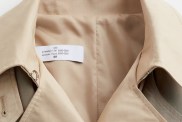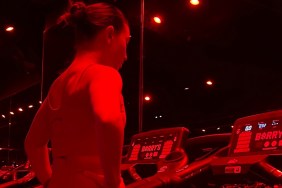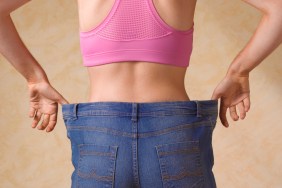

Admittedly, I’m a bit of a health and fitness nut, so given the amount of related events I attend and materials I read, it’s rare that I come across a book that offers all that much in the way of new information that I can use on a daily basis. In his new book, “Which Comes First, Cardio or Weights?” physicist and award-winning journalist Alex Hutchinson, Ph.D, not only managed to educate me on everything from why stretching may be futile to how compression exercise clothing may help, but he supported it all with easy-to-understand scientific evidence. Readers with short attention spans will enjoy the question-and-answer format of the book (see the table of contents here), and at the end of each chapter there’s a concise summary. To give you a taste of the new book, we spoke to Hutchinson and, below the interview, you will find Hutchinson’s Exercise IQ test — let us know how you score!
The Fashion Spot: Have you always had an interest in fitness, health, and nutrition?
Alex Hutchinson: Definitely – but that interest has evolved over time. In my teens and 20s, I was competing internationally as a long-distance runner. Back then, I trained for several hours a day, and my nutrition plan was basically “eat as much as possible.” It took me a while to realize that this wasn’t necessarily the best plan – that it’s just as important to train “smart” as it is to train hard if you want to avoid injuries, and that eating the right foods is just as important as getting the right number of calories. These days, I’m much more focused on exercise and nutrition as a means of staying healthy and feeling good.
tFS: What prompted you to take the time to write and research your new book?
AH: There’s just so much bad fitness advice out there. It’s like people somehow think it’s okay to just make things up – like saying that a plastic bracelet will improve your balance and flexibility. It really makes me angry, to be honest! So this is my way of fighting back: I wanted to bring together the latest answers to common fitness questions, relying on nothing but peer-reviewed, evidence-based findings.

tFS: What was the most surprising thing you learned while working on this book?
AH: That’s a tough one, because there were a lot of surprises! For me personally, the latest research on the best way to build strong bones was totally unexpected. I’d always thought that “weight-bearing activity” was the key, so I was surprised to learn how important strength training is: muscles are always pulling on bones and stimulating them to get stronger. And jarring impacts – like simply hopping up and down for one or two minutes – also turns out to be really helpful.
tFS: What do you think are some of the biggest fitness myths out there? Nutrition myths?
AH: The most widespread fitness myth is the importance of stretching. The way most of us were taught to stretch before workouts does nothing to prevent injuries, and makes you weaker and slower during your workout – but old habits die hard for a lot of people! The idea that you need to lift heavy weights to build muscle is also very common. The truth is, it doesn’t matter how heavy the weight is as long as you lift until you reach the point where you can’t do another rep.
For nutrition myths, the two biggest are probably hydration and vitamins. People have the idea that if they only drink when they’re thirsty, they’ll end up dangerously dehydrated – but the latest research just doesn’t support that. And vitamins… most of the pills people take are useless – if they’re lucky. There’s now some evidence suggesting that antioxidants like vitamin C even block some of the benefits of exercise. Of course, this is still controversial. Personally, I sometimes take vitamin D during the winter, but not much else.
tFS: If there’s one thing you hope people take away from your book, what would it be?
AH: There’s a lot of good news in the book: the evidence just keeps piling up about the mental and physical benefits of even relatively modest amounts of exercise, But really, that’s not going to be a surprise to many people. What will be most valuable, I hope, is the information that helps people get out the door and become more active – and that will be different for every person.
For example, there was a really neat study of Oxford rowers last year that measured the production of endorphins in their brains. When they did a workout in a group setting, exercising in sync, their pain threshold (a proxy for endorphins) rose twice as much as when they did an identical workout alone. This tells us something important about the value of group exercise classes and training partners. But there’s other research that tells us that about one third of people actually are better off exercising on their own. The “right” answer is different for everyone, but my hope is that the book provides the information and tools to find what works for you.
TAKE THE TEST! Cardio or Weights True or False: Exercise IQ
TAKE THE TEST! Cardio or Weights True or False: Exercise IQ

FALSE: Studies have found a strong “dose-response” curve for exercise, with the risk of conditions like diabetes, stroke and heart attack decreasing by as much as 70 percent for those who push beyond standard exercise guidelines. There is a point of diminishing (or even negative) returns, but the vast majority of people will never come anywhere near it.
2. If you get a muscle cramp during a run, you likely started too fast.
TRUE: While the research is still hotly debated, the traditional theory that dehydration and electrolyte loss trigger cramps has come under fire. Instead, recent studies have found that more subtle behaviors like starting too fast and not resting up enough before a race appear to be significant risk factors.
3. You can improve your cardiovascular health by doing a few short, intense bursts of exercise – and that’s just as effective as prolonged “cardio” workouts.
TRUE: Often referred to as high-intensity interval training, short workouts like 4-6 times 30 seconds all out (with four minutes break) have proven to be equivalent to slower 45-minute sessions of running or biking for improving cardiovascular fitness, exercise capacity, insulin sensitivity, and numerous other parameters. The catch: the shorter the intervals, the more you have to make it hurt.
4. Exercising outdoors in winter can cause asthma-like attacks in some people because the freezing air triggers a reaction in their airways.
FALSE: Winter air can indeed trigger “exercise-induced bronchoconstriction” in some people, but it’s the dryness of the air, not its temperature, that triggers the attacks. One solution is to wear a breathing mask (or scarf) that will help keep the air moist.
5. Muscles are most likely to get injured when they’re stretched beyond the limits of their usual range of motion.
FALSE: Most muscle injuries actually occur within the normal range of movement, during eccentric muscle contractions. This is one of the reasons “static” stretching, which aims to extend your range of motion, has little impact on injury risk.
6. It’s impossible to determine your maximum heart rate without actually pushing to your maximum.
TRUE: The old “220 minus your age” estimate for maximum heart rate is long dead. But even revised formulas like “208 minus 0.7 times your age” while more accurate, are still off by more than 10 beats for one in every three people. The only way to truly determine your max is to go there.
7. Light weights and lots of repetitions is the best way to tone muscles without bulking up.
FALSE: “Toning” in the sense of light exercise to make a muscle look taut, simply doesn’t exist. If you’re poking a muscle that feels soft even when it’s flexed, that means you’re poking fat, not “untoned” muscle. To make your muscles stand out, you either have to lose fat or make your muscles bigger – and light weights won’t help unless you do enough reps to reach (or approach) failure.
8. Lifting weights is a more effective way to strengthen your bones than weight-bearing exercise like walking.
TRUE: The old idea that any weight-bearing activity builds bones has given way to a new understanding: strong muscles pull on the bones they’re attached to, and the bones respond to that tension by getting stronger. Jarring impacts like hopping or running also stimulate bone growth – but standing around or walking, not so much.
9. The harder you exercise, the lower the proportion of fat your body burns.
TRUE: A leisurely walk might burn 85 percent fat and 15 percent carbohydrate, while a vigorous run could be using 30 percent fat and 70 percent carbohydrate. But don’t be fooled: you’ll be burning so many more calories overall at higher intensities – including more fat calories – that you’re still better off exercising at moderate intensity for weight loss. It’s the number of calories that matter, not the percentage of fat.
10. If you have a sedentary job, you need to exercise for at least 45 minutes to counteract the negative health effects of sitting at your desk all day.
FALSE: Recent studies have found that prolonged sitting causes harmful changes in your metabolism – and those changes are entirely independent of how long you spend at the gym each day. Instead, frequent breaks, like standing up for at least five minutes every hour, are recommended.
11. By the time you feel thirsty, your body is already dehydrated enough to affect exercise performance.
FALSE: In fact, a recent study found that the fastest finishers at a marathon tend to be the most dehydrated. This remains a highly controversial topic, but several studies have found that simply drinking when you’re thirsty may allow your hydration level to drop, but won’t affect performance.
12. A fast start is essential to maximizing performance in a 5K or 10K race.
TRUE: Surprisingly, an analysis of every world record ever set over 5,000 and 10,000 meters found that, in 63 of the 64 examples, the first and last kilometers were faster than every other kilometer in the race. So starting fast may give you an advantage, as long as you quickly settle in to a more sustainable pace after the first few minutes.
RESULTS:
10-12 correct: Excellent! You’re making the most of your workouts.
7-10 correct: You’re on the right track, but are still stuck with some outdated habits.
Fewer than 6 correct: Uh oh – time to get caught up on the last few decades of exercise science.
image: athleta.com








